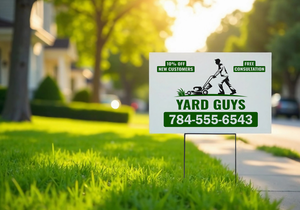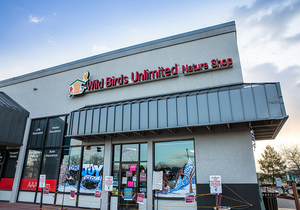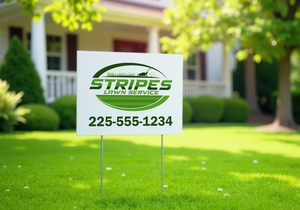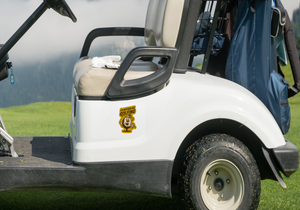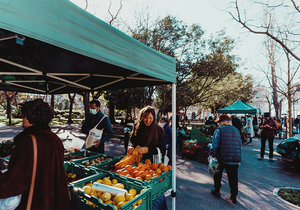What's In a Label: Labeling Requirements for Cottage Foods Explained

You’re ready to take your homemade recipe to the next level, but there’s one big obstacle in your way: the label. If you’re a cottage food producer, making your first label can be a little intimidating. But don’t fret — it’s a piece of cake.
We’re here to help make sure your label is compliant with legal requirements for cottage food labels so you can start selling your jams, salsas, or even cupcakes at fairs, stores, and well… everywhere!
Ready to tie your aprons and cook up some labels? We’re going to guide you through labeling requirements for cottage foods and how to ensure your labels pop off the shelf.

What are Cottage Foods?
The exact legal definition of cottage foods varies from country to country and state to state. But the term usually refers to food products that are prepared in home kitchens and sold directly to consumers in small amounts. Cakes, cookies, and breads are generally considered cottage foods, along with some types of preserves that can safely be made at home.
These homemade delicacies offer a unique and personalized touch that tickles customers’ fancies. But they’re also subject to rules and regulations, like any other food product. Before you start your cottage food journey, get familiar with the specific regulations in your state. Understanding local laws is crucial to make sure that your tasty treats are legally compliant as well as delicious. No matter what state you live in, you should familiarize yourself with the FDA’s policy on starting a home-based food business.
General Label Requirements
Cottage food label requirements are usually pretty similar to general food label requirements, allowing you to roll with the guidelines already in place. Here are some key elements that may “knead” to be included on your labels:
Product Name
Clearly state the name of your product, making it easily identifiable to consumers. The name of your product is one of the most important pieces of information on your label — it’s what will first catch consumers’ eyes and help them remember your product.
Contact Information
Provide your business name and a way for customers to contact you, such as a phone number or email address. Let your customers know that they can reach out to you for more of your mouth-watering delights.
Ingredients
List all ingredients in your product, starting with the main ingredient and proceeding in descending order by weight. It's important to note that spices need to be mentioned only if they qualify as a full food on their own (e.g., celery salt, onion powder, or garlic powder).
Allergy Information
Clearly indicate if your product contains common allergens like nuts, dairy, wheat, or soy. This helps customers with allergies make informed choices and savor your treats without worry.
Net Weight
Don't leave your customers guessing about the quantity of deliciousness they're about to enjoy! Include the net weight or volume of your product on your labels to provide full transparency and let them know exactly what they're getting.
Legible Text
Ensure all text on your label is legible and easy to read. Use a font size that is clear against a contrasting background to enhance visibility. Think of your font choice as turning on a spotlight for your creations so every word shines brightly and captures attention.
Home Kitchen Disclosure
Depending on where you operate, your cottage food label may have to disclose the home kitchen where the product was made. Some states also require you to have a license for operating a cottage food business. Before finalizing your label, thoroughly research the regulations specific to your state to make sure you’re following the rules.

Cottage Food Considerations
There are a few other things to keep in mind when labeling cottage foods. For example, you don't have to include a nutrition label, but if you do, it needs to be accurate and meet the requirements of the Food and Drug Administration (FDA). Additionally, health claims using terms like "low," "reduced," "high," or "good source" require a nutrition label to support the claim. So, make sure your label is ready to dish out the facts to back it up!
Don't Forget the Fun
While it's important to meet the legal labeling requirements for cottage foods, you don't have to make your labels boring or sterile. In fact, a professional-looking, well-designed label will go a long way toward marketing your products and attract new customers. Don't be afraid to sprinkle in some personality and make your labels as delightful as your creations.
Consider your branding, colors, fonts, logo, and graphics. What vibe do you want to give off? Is it a rustic charm, a playful whimsy, or a modern twist? Even as a home-based food business, you should know your brand inside out, and let it shine through your labels.
Just like a pinch of seasoning can transform a dish from ordinary to extraordinary, a well-crafted label with a burst of creativity and personality can elevate your cottage food brand and catch customers’ eyes.

Bring Your Cottage Food Label to Life with Stomp
By following the labeling requirements for cottage foods, you not only tantalize taste buds but also ensure that your products are safe and legally compliant. And once you understand the requirements, it's time to unleash your creativity and infuse your labels with personality, turning them into works of art that capture the attention of potential customers. Remember, a well-designed label can be the secret ingredient to attract new fans to your brand.
Ready to get your cottage food business off the ground? Get started on your custom cottage food labels today with our easy-to-use design tool.
- Tags: Craft Foods Labels
- Nashira Edmiston


